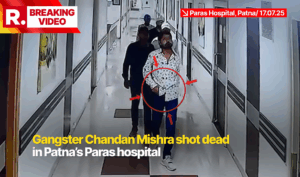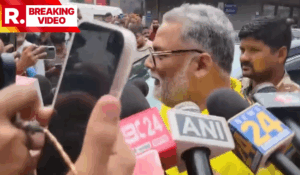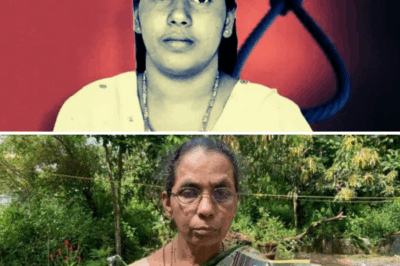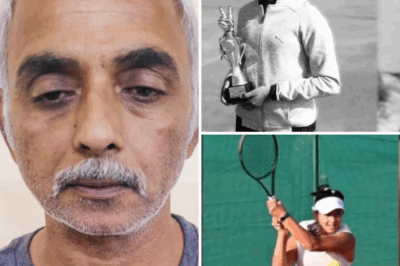A chilling incident unfolded recently at Paras Hospital, where CCTV footage revealed a terrifying gang attack inside the hospital corridor, culminating in a brutal murder. Four armed criminals entered the hospital with alarming ease, raising urgent questions about hospital security and law enforcement.
The victim, Chandan Mishra, a known criminal with a history of over two dozen murders and various offenses, was targeted inside the hospital where he was admitted. Chandan, who had been out on parole after serving time in several prisons including the notorious Patna Central Jail, was no stranger to violence. However, the brazenness with which these assailants stormed the hospital is deeply disturbing.

The CCTV visuals show the four men entering the corridor carefully, clearly aware of their surroundings—indicating prior reconnaissance. They were armed with revolvers and pistols and wasted no time in shooting Chandan inside his hospital room. No footage is available from inside the room, but the attack was swift and merciless. The assailants then fled the scene, leaving behind stunned hospital staff and patients.
How these criminals managed to enter such a supposedly secure hospital corridor without any resistance remains a pressing question. Any ordinary person, whether a patient or visitor, would face serious security risks under such circumstances. This tragic incident exposes glaring lapses in the hospital’s administration and the police’s failure to prevent dangerous individuals from roaming freely armed inside a medical facility.
The hospital administration bears responsibility for the security breach, as it is their duty to ensure safety within their premises. Equally accountable is the Patna police, whose lack of vigilance allowed these criminals to move freely with weapons. The incident has sparked outrage over the apparent lawlessness and the ease with which gunmen can operate inside public spaces.

Currently, police are investigating the identities and backgrounds of the attackers. A special task force has been formed to apprehend the culprits and conduct raids at known hideouts. Past cases involving similar criminals, such as those linked to Ashok Khem and Gopal Kem, are also being reviewed to strengthen the investigation.
Meanwhile, the incident has sent shockwaves across Bihar, sparking widespread fear among its 130 million residents. The violent breach in a hospital—a place meant to be safe and healing—raises serious concerns about governance and law enforcement in the region. Critics are pointing fingers at the current government, accusing it of tolerating mafia influence while failing to provide basic security.
Questions loom large: How long can the people of Bihar expect to live under such a threat? What measures will be taken to dismantle this “mafia raj” and restore law and order? The outrage is growing, with many demanding immediate action to protect citizens and healthcare institutions alike.
As the investigation continues, one thing remains clear—no citizen should have to fear for their life inside a hospital. The Paras Hospital attack is a harsh reminder that without strong security and effective policing, even the most sacred spaces can become dangerous battlegrounds.
News
A Mother Beyond Blood: Mahhi Vij Opens Up About Raising Khushi and Rajveer Like Her Own Ask ChatGPT
Sometimes, it’s not blood that defines family, but love, compassion, and the willingness to open your heart when it’s least…
The Nurse Facing Execution in Yemen: Nimisha Priya’s Fight for Life and Justice
Nimisha Priya’s story is one that shakes the soul—a tale of courage, desperation, and the harsh realities faced by many…
At 90, Dharmendra Finds Solace in Farming Away From Family: A Look Into His Peaceful Farmhouse Life
At 90 years old, Bollywood legend Dharmendra has chosen a life far removed from the hustle and bustle of Mumbai’s…
New Love or Just Lights, Camera, Action? Rumors Swirl as Shefali Bagga and Faisu Spark Dating Buzz
Social media has been buzzing with speculation, curiosity, and a fair bit of confusion after internet star Faisal Shaikh—better known…
Once a Star, Now Forgotten: Beloved TV Actress Found Disoriented on Streets of Bengal
In a heartbreaking twist of fate, a once-famous face from Bengali television and film has resurfaced under circumstances that have…
A Father’s Confession: The Shocking Truth Behind Radhika Yadav’s Murder
When the news broke that 25-year-old tennis prodigy Radhika Yadav had been killed by her own father, the nation reeled…
End of content
No more pages to load












